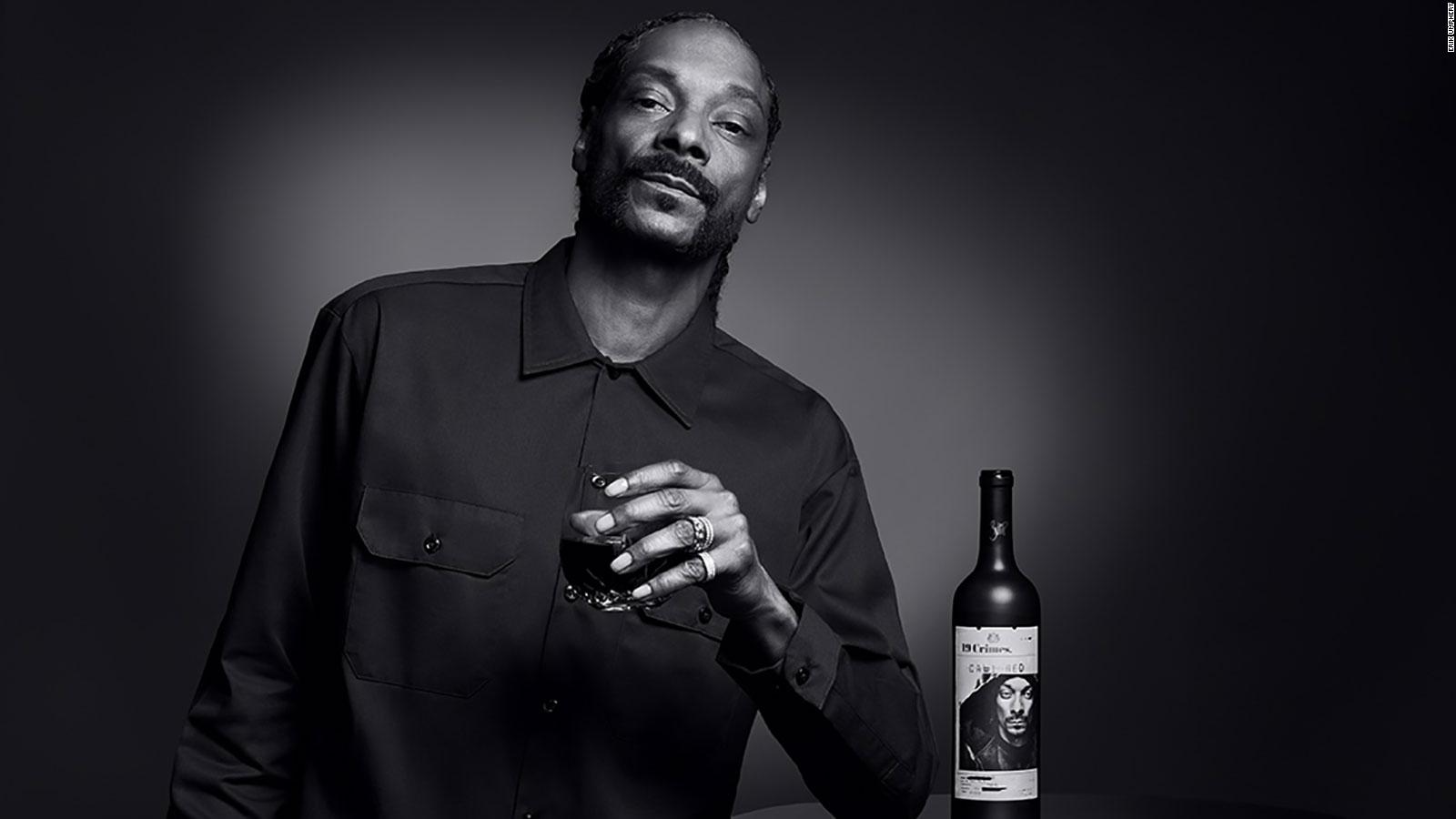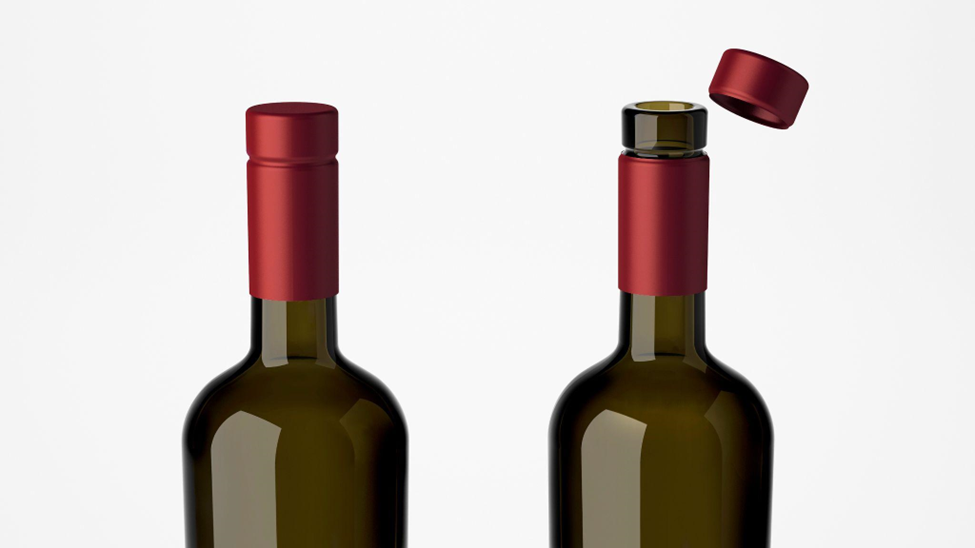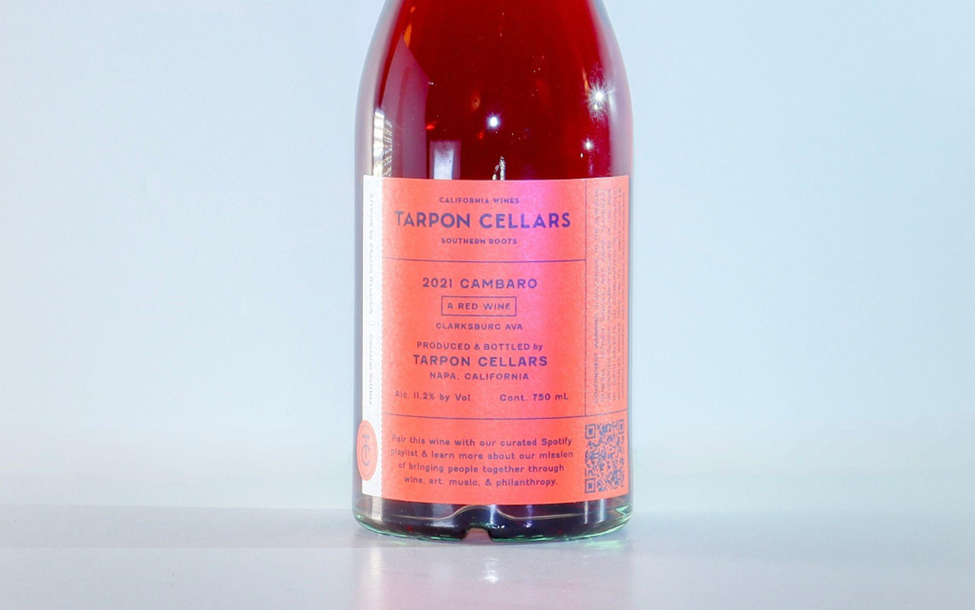Glass packaging trends in the wine industry are always changing, but remain grounded in tradition. As leaders of the US domestic market in glass packaging, and decades of experience in the industry, Global Package have been creating these trends as much as utilizing them.
Global Package has strategic alliances with innovative suppliers, designers and marketing collaborators both domestically and internationally. These strategic alliances allow us to keep up to date with trends globally from various spheres including material, design, market behavior, and digital behavior. As they allow our business to evolve, we are able to develop exciting new lines to assist our clients (you) launch and market your brands to a continually developing audience as your business evolves along with it.
In this article, we’ve collected and compiled a breakdown of current trends and traditional conventions to assist in your choice of glass packaging for your wine label. Global Package will keep you apprised of trends in common glass packaging practices as you read on.
Stay ahead of the pack with Global Package; our modern, practical glass packaging solutions take into account current trends while respecting traditional wine bottle styles.

Quality glass packaging for wine
Quality glass packaging for wine can be hard to find, but making a selection from the wide variety of unique and traditional bottles to compete against established brands is so much harder.
While being influenced by the latest trends may seem unoriginal, there are reasons why trends are trends. When utilized in an informed way that complements your brand rather than becoming it, sales potential and brand awareness in a very competitive market is increased.
We’ll aim to show you where the market is going, and why it’s going that way. COVID-19’s effect on drinking habits, shifting consumer ideologies towards premiumization and sustainable practices like eco-friendly packaging, and the market downturn have all facilitated the current shift in glass packaging trends.
Get trending
Read through our guide for information about your wine packaging options and what trends are most popular right now. Global Package offers solutions in every market trend, as well as some innovations of our own.
The shift in wine bottle packaging trends
Fine wines were formerly only regarded as such when they were packaged in 750mL glass packaging with natural corks, evolving eventually to screw cap closures becoming more accepted by the industry and consumers. Nowadays, other kinds of innovative wine packaging, particularly PET plastic bottles, pouches, and cans are increasingly becoming popular due to growing environmental concerns and the impact of COVID-19.
Nevertheless, there are some winemakers that prefer bottled wine and proper glass packaging because the material is inert and allows for the wine to mature unaltered over time. Moreover, consumers resonate with proper glass bottles as it speaks to quality and adds to the perception of themselves of a discerning wine enthusiast. The vast majority of people still associate truly fine wine with glass bottle packaging.
As a result, many wineries have chosen to keep glass bottle packaging that, aside from the brand name, generally all looks the same. Packaging that looks uninteresting is a sure recipe for not standing out on retail shelves. When it comes to packaging your wine brand for market success, what preferences should influence the overall physical appearance of your wine glass bottle?
The packaging that wine is presented in is as important as the wine itself. Of course, the bottle’s content is important, but consider the last time you purchased a bottle of wine. Was it because you had a taste of the wine first, or could it have been the allure of the packaging?
8 Premium Glass Packaging Trends

The overall outlook of your wine bottle is a big deal. You could use bold colors on labels, infuse augmented reality designs as 19 Crimes did, or simply make your bottles appear in fancy boxes. All these extra touches determine if a wine will stand out or not.
Wine bottles and the packages they come in have had a lot of time to evolve. Today, wine producers are endlessly inventive when it comes to the aesthetics of their wine and champagne bottles.
Here are some recent or enduring packaging solution trends for your consideration:
1. Eco-friendly Packaging
Creative packaging has always been one of the best and most effective ways to help a brand get noticed in a crowded market. But today, the bar is higher. A consumer has to feel invested in a brand story before they buy; they want to see themselves and their beliefs reflected in all aspects of the wine, from the vine to the wine bottle.
Packaging trends are moving towards more eco-friendly and sustainable options, thanks to shifting consumer ideologies. Over half of consumers are committed to buying from sustainable brands when possible, and they are searching for more responsible behavior from the vineyard through the retail channels.
Even if your message isn’t sustainability, winemakers are being rewarded for doing their part in the caretaking of our environment. Shifting your sustainability practices towards eco-friendly packaging is one of the simplest and most effective ways to communicate this message.
- Lighter weights
- Lower shipping costs
- Less carbon dioxide
- Eco-friendly
- Values of “Alternative”, “Sustainable” and “Eco-conscious” are Trending
Lighter weights, less money spent on glass, less shipping costs, less carbon dioxide produced in manufacturing, due to recycled glass and lowered glass weight per bottle. Glass bottle packaging has achieved something no other industry has, affordable methods to combat climate change without hurting the market, and Global Package is at the forefront of eco-friendly, sustainable glass packaging.
2. Custom Glass Shape
This quintessential creative step promotes a clear and strong commitment to the quality of a product. Eye-catching appeal can come from unique bottle lines, embossed imagery and copy, the use of silk-screening, and attached medallions. While there are endless methods to choosing a design approach, it is most important to work with an experienced team to reach your ultimate objective. Global Package specializes in the entire process, from sketch to delivery.
Customized wine and spirits bottles offer the opportunity to create your own unique statement. While customization can seem complex, costly, and daunting, be assured that the experienced professionals at Global Package will make the process work seamlessly to the benefit of your brand. We facilitate every stage of the process, including quoting, design, bottle supply or manufacture, quality control, decoration, and timely supply of finished products at affordable prices.
3. Gift box packaging
Wine is frequently given as a present. Here’s your chance to go all out by giving your wine brand a unique package that helps it stand out from other wines. Unique gift box packaging can immediately add a touch of “high-end” to the wine bottles.
With gift packaging, you can be endlessly creative by using pop-ups, artwork, and other elements to stand out.
4. Bag-in-bottle packaging
Wine lovers who desire all the benefits of using more eco-friendly materials but still prefer the traditional wine bottle have the option of using bags-in-bottles. These interesting bottles are as green as they are when they come from production. They are made of recycled paperboard that has been fused with water-based adhesive and shaped into a more traditional wine bottle form using heat.
The benefits are huge: They are five times lighter than traditional glass bottles and have a 12-month shelf life. They are also humidity, stain, and break-resistant. They can also be handily packed in a cardboard box with a handle.
5. Single-serve glass bottles
Although modern packaging solutions have their uses, glass remains the preferred choice, particularly when bottling expensive wines. Although the norm is 750mL bottles, smaller wine bottle sizes have started to appear on the market due to demand.
Smaller wine bottles appeal to an increasingly growing audience of consumers who are more conscientious about their alcohol intake. Also known as miniatures, they are typically 200mL or less. Additionally, there are “half bottles” that contain about 375mL. The packaging of these wine bottles reduces waste and the amount of leftover wine.
Types of Wine Bottle Shape
Choosing a product from a selection of different wine bottles usually takes the buyer about 7 seconds. So, you will naturally want to bring your A-game to reward consumer curiosity, and even make wine connoisseurs fall in love with your wine at first sight.
Wine bottles now come in a large variety of shapes, colors, and sizes, and to some more knowledgeable drinkers can bring some insight as to what’s inside. Some wines, such as sparkling wine, can be distinguished simply by their distinctive shapes and closures.
Today, the most popular wine bottle shapes are:
6. The Bordeaux Bottle

When you think of a standard wine bottle, you’re probably thinking of the Bordeaux bottle shape.
The modern Bordeaux wine bottle shape is stocky with broad shoulders, and is usually used to bottle heavier reds, like Cabernet Sauvignon.
The modern bottle shape, designed for export and aging, protects the wine from bumpy overseas journeys, while the prominent shoulder is thought to help catch the sediment that forms when a wine ages.
This sediment is perfectly natural, but it’s not nice having a mouthful of it. If these wines were in a bottle with a tapered shoulder (like Burgundy bottles–-coming up later), this sediment would go straight into the decanter, into your glass if not decanting, or straight into your mouth.
This is why these wines are supposed to rest in a cellar (it lets the sediment settle on one side of the bottle) and then be poured with that side down—it helps it settle out of the wine rather than being mixed in again.
Find wine bottles in many styles including Bordeaux bottles here
7. The Burgundy Bottle

The late 18th century saw the introduction of the Burgundy bottle, with its distinctive, gradual curve starting from its neck resulting in the broader body at the base that sets it apart from other wine bottle variants.
It is widely assumed that the shape of this bottle was due to how simple it was for glassblowers of the time to craft it. However, it is also theorized that the different bottle shapes enabled the historical drinker to easily distinguish the type of wine inside the bottle. To add to this, due to widespread illiteracy and the time they were first developed, labels would have been of little use in the identification of the wine.
It is posited that the distinctive shapes emerged as a way to tell apart one region’s wine from another, and then stayed that way due to the convention of their use.
This bottle is usually heavily associated with both red and white Burgundy sparkling wines made from Pinot Noir and Chardonnay wine grapes. Chardonnay and Sauvignon Blanc are usually also packed in Burgundy bottles.
Find wine bottles in many styles including Burgundy bottles here
8. The Hock Bottle

Commonly referred to as Hock bottle, Riesling bottle or Riesling Hock, but in some minor variations to the shape, also goes by Alsace/Moselle bottle. In the 19th century, wine producers usually transported Bordeaux and Burgundy bottles to Britain over the English Channel. However, the bottles needed to be stronger to prevent breaking during turbulent situations at sea. A sturdier bottle was made to answer this situation: the Hock bottle.
Compared to bottles of Burgundy and Bordeaux, this one is sleeker, slimmer, and a tad taller. The Hock bottle was intended for Riesling, as evidenced by the fact it is sometimes called a Riesling bottle or Riesling Hock, but it today also holds other wines, possibly something like Gewürztraminer, a fragrant, off-dry white wine that has notes of lychees.
Find wine bottles in many styles including Hock bottles here
Global Package Stocks Trending Glass Packaging Brands
The Elegant Light Line features a sophisticated and confident design with accentuated curves and graceful neck styling that give the bottles a classic and timeless style. Influenced by the European style of bottle-making, our Elegant Light Line wine bottles will suit any wine.
Global Package understands the beauty of simplicity. We provide easy access to an attractive range of stock bottles for wine, spirits, and other products with ample local stock maintained in our California, Oregon, and North Carolina warehouses, giving you an effective, straightforward, and rapid route to market for your brand.
These bottles, which feature high-quality designs and an ultra-premium presentation, are produced by factories exclusively in Europe. They are available in a range of glass colors and shapes, with unique bottle finishes.
Our Sommelier specialty bottles are of a different class of wine bottle. These bottles feature an anti-drip ring around the mouth, preventing drips when pouring the wine. These glass bottles are heavier than other options, thus providing a high-end, premium feel.
If you need your wine brand to balance responsibility and care for the environment with the desire to run wild and free, this is the wine bottle for you. Made with recycled glass and a sustainable manufacturing process, our Wild Glass specialty bottles feature natural imperfections that make them unique and beautiful.
Our Doble Alto specialty bottles are a luxurious execution of aesthetic and style. The bottles have a double base, which gives them an expensive and deluxe look. The wine bottles are also available in a range of finishes, including color gradation, magnifying glass effect, and coating at the bottom.
In addition to all of the aforementioned categories, we also supply customized wine bottles based on your specific instructions and requirements. To truly integrate your packaging into your brand aesthetic, we can customize wine bottles into any shape or design you choose. Our knowledgeable team of experts are on hand to guide you through the whole process of creating the perfect custom wine bottle—from design through to production.
Global Package’s Sustainability Efforts in Glass Packaging
Global Package LLC has a long history of working with glass manufacturing partners around the world who have led efforts in sustainability.
Glass weight is a top consideration when it comes to shipping, storing, and displaying wine bottles. Our Elegant Light™ bottles are made with less glass and, thus, are lighter weight, resulting in considerable savings in transportation costs. In fact, they are up to 20% less expensive to ship than standard bottles.
On the manufacturing front, it takes 1.8 tons of raw material to produce one ton of glass. Cullet, which is recycled glass, can be added in varying amounts to decrease these raw materials. Recycled cullet is critical to reduce raw material use, pollutants, and even transportation costs.
Several years ago, Global Package introduced to the US market Wild Glass™, an innovative line of bottles from Spain’s Estal. These bottles are not only works of art, they are made of almost 100% cullet recycled glass, thus making them the most sustainable bottles on the market.
Every Wild Glass™ bottle is unique, since the manufacturing process allows bubbles, orange peel, coloring line imperfections, and color variations to remain. The resulting aesthetic is an organic design similar to hand blown glass, but with all the efficiencies of automatic glass production. Because these cosmetic imperfections are not only acceptable but desirable, fewer bottles are rejected, reducing the discard rate from 25% to 15% at the factory.
Why choose Global Package?
At Global Package, we are committed to helping you choose the best packaging for your wine brand. We offer outstanding and innovative packaging solutions for your winery, ensuring your product is packaged the way you want it.






















